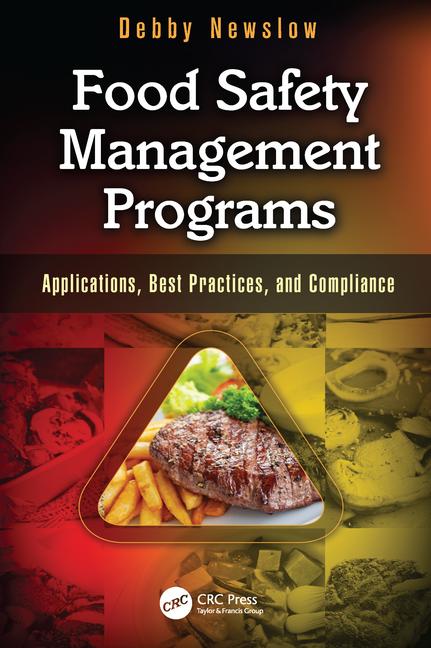Maturity in Food Safety Culture at Any Size

Petar Chernaev/E+ via Getty Images
Strong food safety cultures are often associated with maturity. With most food companies, a strong food safety culture is not developed overnight. Following three steps can help develop food safety culture maturity at any organizational level, even for small- and medium-sized businesses.
It is well known that every food organization has a food safety culture. Whether it is poor or world-class, some kind of food safety culture is present at every organization making food. The authors believe that a world-class food safety culture is not only an outcome of having leaders with strong technical food safety skills and strong people skills, it is also the result of having technical leaders with the ability to successfully integrate both technical knowledge and people skills into the organization through processes and systems.
In this definition, the word "strong" can easily be replaced with the word "mature," as maturity is often a discussion point regarding food safety culture. It is even outlined in the 2018 GFSI whitepaper on food safety culture.1 While there is a fundamental understanding that mature food safety cultures are more desirable, it is beneficial to explore what having a mature food safety culture means, and whether having a mature food safety culture is realistic for all food companies.
First, let us dig into the word "maturity." The American Psychological Association defines maturity as "the ability to deal effectively and resiliently with experience and to perform satisfactorily in developmental tasks (biological, social, cognitive) characteristic of one's age level."2 This concept of "the ability to deal effectively" and "to perform satisfactorily" is apparent when we consider human development. For example, when a toddler explores, they simply wander about. When an adult is traveling somewhere new, they consult a map or plug the address into a GPS system for directions. Each response is appropriate based on experience.
A similar analogy can be used for the food safety culture maturity of food organizations. For example, a small food company, or startup, may not have a robust automated system to collect and respond to customer complaints. Their system may include steps such as paper records and manual tallying of complaints. The system could be appropriate based on the company's size, exposure, and ultimately its maturity level given that it is still effectively responding to and following up on its complaints. However, it may not be considered appropriate to use the same manual system for a large food company. The large company should have a more sophisticated system that includes digital records and automated trending of complaints because it has broader reach, greater exposure, and likely many more complaints that may be difficult to manage manually. The large company should be more mature in its food safety programs.
Mature food safety culture is within reach for all food companies. The stage of maturity may look different based on the exposure and reach of each company. It is important to say that all food companies must be in compliance with regulations; however, when the people, processes, or systems to support a mature food safety culture are lacking, the task of reaching maturity in food safety culture can be daunting.
If a company grows from a small business to a more mature organization, but fails to consider how to scale the food safety culture, this can lead to organizations with a poor, or less than ideal, food safety culture. As small organizations scale, their food safety support, processes, and systems should grow proportionally to their business.
Regardless of size, there are basic steps any organization can take to reach a more mature food safety culture. Here are three steps along the journey to reach a world-class level of food safety culture maturity.
- Build food safety technical skills. Each year, a business strategy should be devised to strengthen food safety technical skills across team members. The strategy should include how to ensure that the company has the necessary food safety skills, when to hire food safety professionals, how to build food safety teams as the business grows, and what investment will be required over time. In addition, the roadmap should include training and certifications for continuous improvement including HACCP, PCQI, internal auditing, food microbiology, and others.
- Build leadership skills. Similar to technical skills, the food safety culture roadmap must address developing leadership skills. Many of the topics the authors routinely address with food safety and quality teams are skills like influencing, conflict resolution, team building, and rewarding, as these types of skills are often not the primary focus when obtaining technical skills. No matter how strong the team's technical skills are, food safety culture will not move forward if leadership skills are not developed.
- Implement processes and systems to integrate food safety into the organization. Building food safety culture maturity happens when technical leaders developed in earlier steps integrate into the fabric of the organization. Let us return to the example of customer complaints. An organization that is collecting customer complaints and performing a cross-functional investigation will fully understand the issue to reduce or eliminate risk, thereby benefiting the overall business. The integration step is where an organization reaps the full benefits of maturity—this is why it is crucial.
Food safety professionals are the champions of food safety culture and must step into their role of driving maturity for organizations, no matter the size. As companies scale, it is important for them to enable this growth and maturity. By following the steps above, the roadmap for a more mature food safety culture will be within reach.
References
1 GFSI. "A culture of food safety: A position paper from the Global Food Safety Initiative (GFSI)." April 11, 2018. https://mygfsi.com/wp-content/uploads/2019/09/GFSI-Food-Safety-Culture-Full.pdf.
2 APA Dictionary of Psychology. "Psychological maturity." 2022. https://dictionary.apa.org/psychological-maturity.
Looking for a reprint of this article?
From high-res PDFs to custom plaques, order your copy today!







